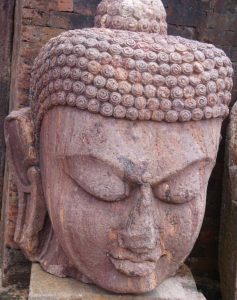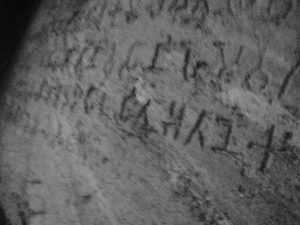
The day Of Vesak is one of the most important Buddhist festivals commemorating the birth of the Buddha.
In the year 2020 it falls on the 7th of May.
Vesak, also known as Buddha Purnima (full moon) or Buddha Jayanti (birthday), is the day of the full moon in the lunar month of Vesakha. (the name being derived from the second lunar month in the Hindu calendar)
The Vesak festival is celebrated every year during the months of April, May or early June.
According to the older traditions of Theravada Buddhism, Vesak is considered to be the time of Siddhartha Gautama’s birth. It is also known to be the time when he attained enlightenment, that is, his birthing as the Buddha, ‘The One Who Knows’. Finally, it is seen as the time when he attained Nirvana, (in his eighties), leaving forever the physical world of time and space.
Buddhism teaches that life continues as death and rebirth. The Buddhists understand that there is no soul or self that reincarnates. Those whose minds contain desires are in the continuous cycle of death and rebirth (samsara), till such time that all desires have ended. Thus, when the understanding of the true nature of all things happens, Nirvana is attained.
A central part of religious practice in Buddhism are the Three Jewels – The Buddha – the Enlightened one; the Dhamma – The teachings of the Buddha, the way of living and the true nature of existence; the Sangha – the Buddhist or spiritual community.
When the Buddha attained enlightenment, the first thing he did was to ’set into motion the wheel of Dhamma’. He did this by giving his first sermon to his five former companions in the Deer Park in Benares. His teachings advised against extreme luxury and hardship and taught the ‘Middle Way’ and the Eightfold Path. He formed the Sangha, where he and his bhikkus (monks) travelled around to expound the teachings of Buddhism. During the rainy season they would come together again. Food, clothing and accommodation were provided to the bhikkus by the lay Buddhists during this time. These living spaces gradually became resting places (viharas) for the bhikkus and, eventually, permanent monasteries.
In this way, the Buddha continued his teachings to all his followers, both the bhikkus and the lay people, for the next forty five years.
The ancient text, The Mahavamsa: The Great Chronicle of Ceylon (sixth century CE), chronicles the sacred history of the Sinhalese people. It reveals their mission to preserve the sanctity of the Dhamma (the Buddha’s teachings).
The following excerpts cite the events of the Buddha’s enlightenment, the festival of Vesak with its celebration in those ancient times and the passing of the Buddha to Nirvana –
“At Uruvela (Bodh Gaya), in the Magadha country, the great sage, sitting at the foot of the Bodhi-tree, reached the supreme enlightenment on the full moon day of the month Vesakha.”
The King proclaimed, “I held twenty four great Vesak ha festivals….I have had a thousand lamps with oil and white wick burning perpetually in twelve places, adoring the Blessed (Buddha) with this offering…Constantly in eighteen places have I bestowed the food for the sick and remedies for the sick, as ordered by the physicians. In forty four places have I commanded the perpetual giving of rice food prepared with honey…I commanded the preachings of the doctrine everywhere, in the viharas of Lanka, giving rewards to the preachers…”
“When the Conqueror, the incomparable, he who has the five eyes, had lived eighty-four years and had fulfilled all his duties in the world, in all ways, then at Kusinara (a town in Nepal) in the holy place between the two Sala trees, on the full moon day of the month Vesakha, was the light of the world extinguished” (the passing of the Buddha to Nirvana).
(The Mahavamsa (2, 14, 223) – translated by Wilhelm Geiger)
The day of Vesak is celebrated with the decorating or lighting of lamps, symbolising enlightenment.
According to the Buddhist teachings, worshipping or pouring water over a Buddha image symbolises the aim to develop Budddha qualities. It also helps to purifiy the mind. The offering of flowers represents the impermanence of life, while the lighting of incense symbolises the spreading of compassion to all living things.
On this day, the lay people may adopt the extra five precepts of the Buddhist teachings. These are the precepts that are practiced by the monks. (abstaining from food after mid-day, a simple bed, no jewelery, no entertainment and no monetary dealings).
Giving to charity and donations to monks are part of the celebrations, creating good karma.
Distribution of food and drink to the people are an important part of the festival. It also serves as a way of paying homage to the Buddha.
On this day the Buddhists visit the temples and listen to the lectures on Buddhism, including chanting and meditation. These temples are important centres of religious life, where Buddhists are able to study, practice and meditate.
The people with their families come together to walk around the brightly lit Stupas, as a way to celebrate with the community.
The celebrations on Vesak are symbolic of the Sangha, bringing the lay people and the monks together in worship.
It also gives one an opportunity to create good karma through the act of giving.
In addition, listening to the lectures, chanting and meditation helps to inculcate and strengthen the faith of the people.
The Buddhist vision sees everything as interconnected and that everyone and everything affects everyone and everything else. Hence, based on existing conditions, things arise, continue and then change, thereby emphasising the impermanence of all that exists.
The ‘Major Rock Edicts of Ashoka’ carries an intimation of the Vesak festival in its inscriptions.
The ‘4th Major Rock Edict’ appears to indicate the celebration of the festival with the following inscription-
“….the sound of the drum has become the sound of Dhamma (the Buddha’s teachings), showing the people the displays of heavenly chariots, elephants, balls of fire and other divine forms….”
(Thapar 251)


Poonam enjoyed reading about Buddha and his teachings and importance of Buddha Purnima. I did not know in so much detail.
Thank you Amita! Glad you enjoyed it!